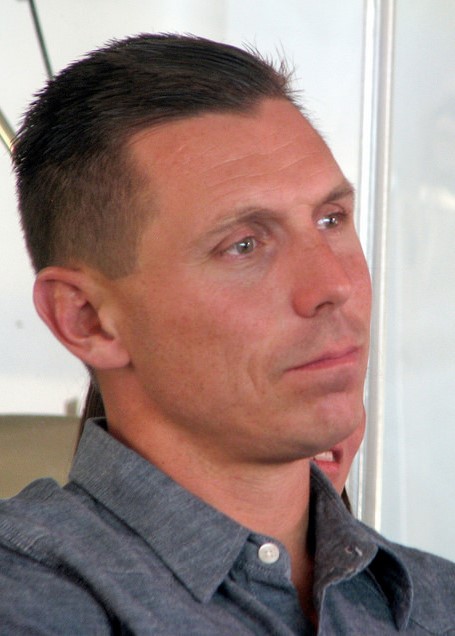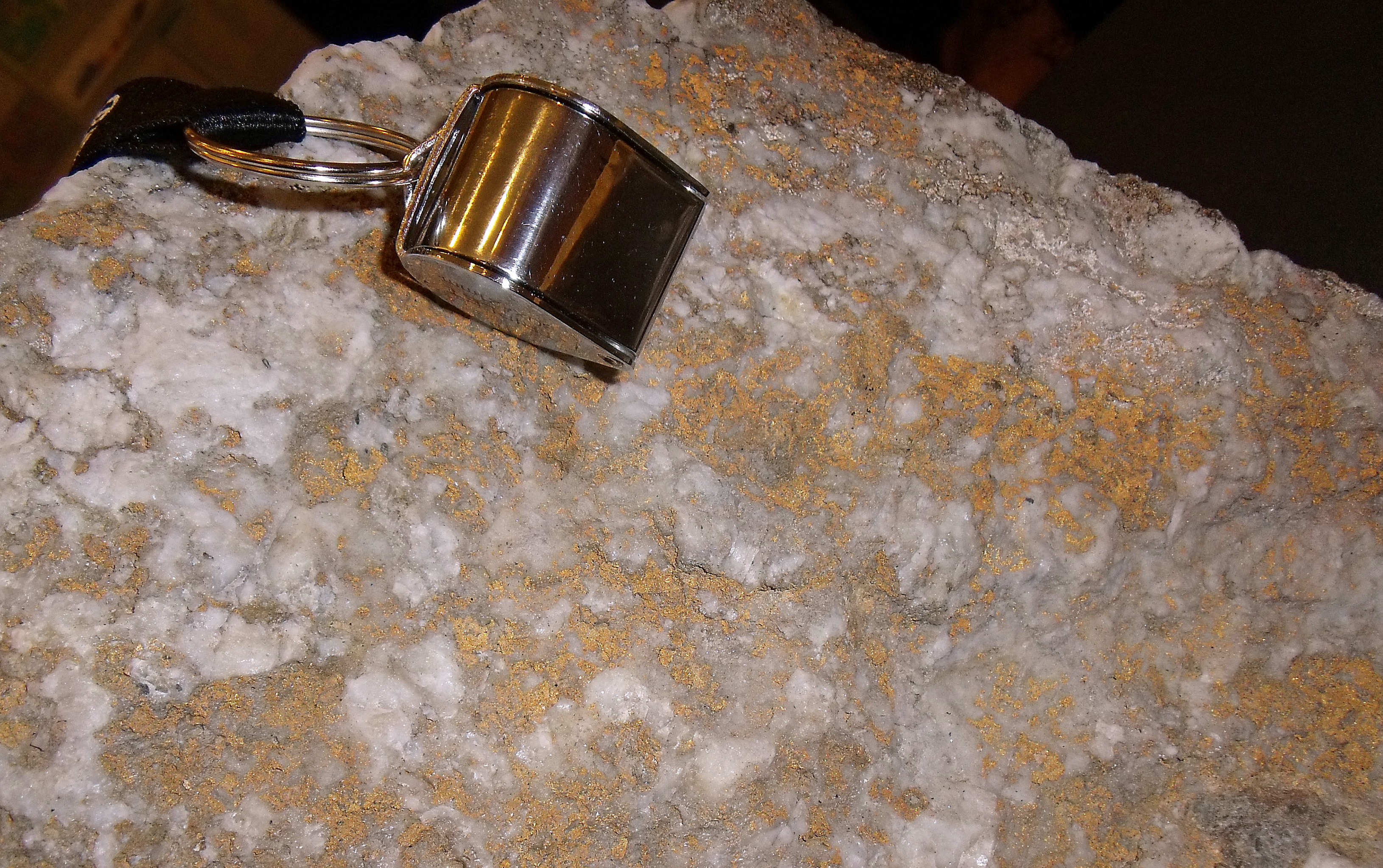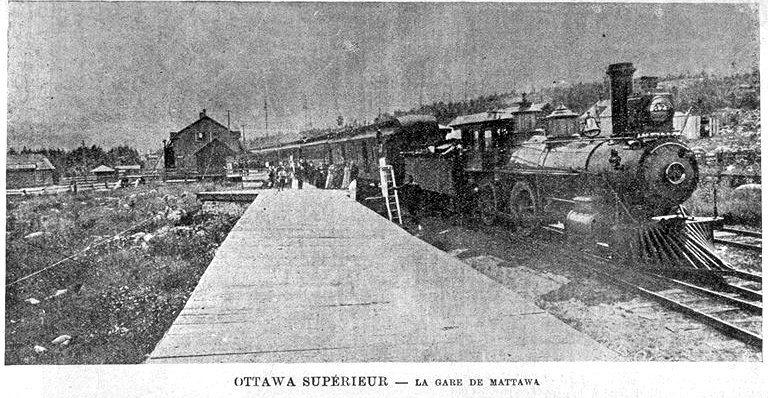|
Francis Cochrane
Francis Cochrane, (November 18, 1852 – September 22, 1919), was a Canadian politician. Early life Cochrane was born in 1852 in Clarenceville, Quebec. He worked for Marshall Field in Chicago during the 1870s before moving to Pembroke, Ontario, where he met his wife, Alice Dunlap. He and Alice lived in Mattawa, Ontario, during the 1880s before they moved to Sudbury. While living in Mattawa, Cochrane hosted Prime Minister John A. Macdonald at his home while he recovered from a brief illness. Municipal career A prosperous hardware merchant in Sudbury, Ontario, he was the first president of the town's board of trade and later served as mayor of the town in 1897, 1898, and 1902 after winning a council seat in 1896. Along with the local businessman William McVittie, he subsequently invested in the Wahnapitae Power Company, which was contracted to provide the town's hydroelectricity services until it was sold to the Hydroelectric Power Commission of Ontario in 1929. Cochrane ... [...More Info...] [...Related Items...] OR: [Wikipedia] [Google] [Baidu] |
The Honourable
''The Honourable'' (Commonwealth English) or ''The Honorable'' (American English; American and British English spelling differences#-our, -or, see spelling differences) (abbreviation: ''Hon.'', ''Hon'ble'', or variations) is an honorific Style (manner of address), style that is used as a prefix before the names or titles of certain people, usually with official governmental or diplomatic positions. Use by governments International diplomacy In international diplomatic relations, representatives of foreign states are often styled as ''The Honourable''. Deputy chiefs of mission, , consuls-general, consuls and honorary consuls are always given the style. All heads of consular posts, whether they are honorary or career postholders, are accorded the style according to the State Department of the United States. However, the style ''Excellency'' instead of ''The Honourable'' is used for ambassadors and high commissioners only. Africa Democratic Republic of the Congo In the Democrati ... [...More Info...] [...Related Items...] OR: [Wikipedia] [Google] [Baidu] |
Ottawa
Ottawa is the capital city of Canada. It is located in the southern Ontario, southern portion of the province of Ontario, at the confluence of the Ottawa River and the Rideau River. Ottawa borders Gatineau, Gatineau, Quebec, and forms the core of the Ottawa–Gatineau census metropolitan area (CMA) and the National Capital Region (Canada), National Capital Region (NCR). Ottawa had a city population of 1,017,449 and a metropolitan population of 1,488,307, making it the list of the largest municipalities in Canada by population, fourth-largest city and list of census metropolitan areas and agglomerations in Canada, fourth-largest metropolitan area in Canada. Ottawa is the political centre of Canada and the headquarters of the federal government. The city houses numerous List of diplomatic missions in Ottawa, foreign embassies, key buildings, organizations, and institutions of Government of Canada, Canada's government; these include the Parliament of Canada, the Supreme Court of ... [...More Info...] [...Related Items...] OR: [Wikipedia] [Google] [Baidu] |
Joseph Michaud (Ontario Politician)
Joseph Michaud (June 13, 1857 – September 24, 1913) was a Canadian politician, who represented the electoral district of Nipissing West in the Legislative Assembly of Ontario from 1902 to 1904. Michaud was born in 1857. A member of the Liberal Party The Liberal Party is any of many political parties around the world. The meaning of ''liberal'' varies around the world, ranging from liberal conservatism on the right to social liberalism on the left. For example, while the political systems ..., he was elected in the 1902 election. He died in 1913. References External links * 1857 births Franco-Ontarian people Ontario Liberal Party MPPs People from West Nipissing 1913 deaths 20th-century members of the Legislative Assembly of Ontario {{Liberal-Ontario-MPP-stub ... [...More Info...] [...Related Items...] OR: [Wikipedia] [Google] [Baidu] |
1902 Ontario General Election
The 1902 Ontario general election was the tenth general election held in the province of Ontario, Canada. It was held on May 29, 1902, to elect the 98 Members of the 10th Legislative Assembly of Ontario ("MLAs"). The Ontario Liberal Party, led by Sir George William Ross, formed the government for a ninth consecutive term, although with only a very slim, two-seat majority in the legislature. The Ontario Conservative Party, led by Sir James P. Whitney formed the official opposition. Expansion of the Legislative Assembly The number of electoral districts was increased from 93 to 97, under an Act passed in 1902. Ottawa in both cases was entitled to elect two members, and thus 98 MLAs would now be elected to the legislature. The following electoral changes were made: :* Algoma West was divided into Fort William and Lake of the Woods and Port Arthur and Rainy River :* Algoma East was divided into Algoma, Manitoulin and Sault Ste. Marie :* Nipissing was divided into Nipi ... [...More Info...] [...Related Items...] OR: [Wikipedia] [Google] [Baidu] |
Nipissing West
Nipissing West was a provincial electoral district in the Canadian province of Ontario, active from 1902 to 1908. Due to population growth, the district of Nipissing was divided into Nipissing West and Nipissing East for the 1902 election. By 1908, however, the town of Sudbury had grown enough to warrant its own electoral district. The electoral district of Sudbury was carved from Nipissing West that year, while the remainder of Nipissing West became the new district of Sturgeon Falls Sturgeon Falls is a community and former town in Nipissing District, Ontario, located on the Sturgeon River. The community had a population of 6,939 at the 2021 census and a density of 1,129/km2 (2,920 sq mi). Following a failed legal challeng .... Members of Provincial Parliament References Former provincial electoral districts of Ontario {{Canada-constituency-stub ... [...More Info...] [...Related Items...] OR: [Wikipedia] [Google] [Baidu] |
Progressive Conservative Party Of Ontario
The Progressive Conservative Party of Ontario (PC; ), often shortened to the Ontario PC Party, or simply the PCs, colloquially known as the Tories, is a Centre-right politics, centre-right political party in Ontario, Canada. During its uninterrupted governance from 1943 to 1985, the Ontario PC Party adhered to the ideology of Red Toryism, favouring government intervention in the economy, increased spending on infrastructure, education and health care and being progressive on social issues such as equal pay for women, anti-discrimination laws, voting rights for First Nations in Canada, First Nations people and Franco-Ontarians, French-language services. In the 1990s, the party underwent a shift to Blue Toryism after the election of Mike Harris as leader, who was Premier of Ontario, premier from 1995 to 2002 and favoured a "Common Sense Revolution" platform of cutting taxes and government spending while balanced budget, balancing the budget through small government. The PCs lost po ... [...More Info...] [...Related Items...] OR: [Wikipedia] [Google] [Baidu] |
Frood Mine
Frood-Stobie Mine is a nickel mine in Greater Sudbury, Ontario, named for Thomas Frood, an employee of the federal department of Crown lands who prospected and staked many of the early mining claims in the area. A major arterial road in the city is also named for Frood. The Frood Mine was, prior to 1 January 1929, the subject of exploitation by the International Nickel Company of Canada and the Mond Nickel Company, because they had adjoining claims to the ore body. In addition, the Mond mine had a problem with its hanging wall. It was decided between Robert C. Stanley and Alfred Mond that the synergies of corporate amalgamation were so great that they fused their respective companies into the former. During the Second World War, the Frood Mine alone accounted for a full 40 per cent of all the nickel used in Allied artillery production. In recognition of that contribution, Elizabeth II, Queen of Canada, and her husband, Prince Philip, Duke of Edinburgh, visited Frood Mine ... [...More Info...] [...Related Items...] OR: [Wikipedia] [Google] [Baidu] |
Prospecting
Prospecting is the first stage of the geological analysis (followed by Mining engineering#Pre-mining, exploration) of a territory. It is the search for minerals, fossils, precious metals, or mineral specimens. It is also known as fossicking. Traditionally prospecting relied on direct observation of mineralization in rock outcrops or in sediments. Modern prospecting also includes the use of geologic, Geophysics, geophysical, and Geochemistry, geochemical tools to search for anomalies which can narrow the search area. Once an anomaly has been identified and interpreted to be a potential prospect direct observation can then be focused on this area. In some areas a prospector must also stake a claim, meaning they must erect posts with the appropriate placards on all four corners of a desired land they wish to prospect and register this claim before they may take samples. In other areas publicly held lands are open to prospecting without staking a mining claim. Historical method ... [...More Info...] [...Related Items...] OR: [Wikipedia] [Google] [Baidu] |
Ontario Hydro
Ontario Hydro, established in 1906 as the Hydro-Electric Power Commission of Ontario, was a publicly owned electricity utility in the Province of Ontario. It was formed to build transmission lines to supply municipal utilities with electricity generated by private companies already operating at Niagara Falls, Ontario, Niagara Falls, and soon developed its own generation resources by buying private generation stations and becoming a major designer and builder of new stations. As most of the readily developed hydroelectricity, hydroelectric sites became exploited, the corporation expanded into building coal-fired generation and then nuclear power, nuclear-powered facilities. Renamed as "Ontario Hydro" in 1974, by the 1990s it had become one of the largest, fully integrated electricity corporations in North America. Origins The notion of generating electric power on the Niagara River was first entertained in 1888, when the Niagara Parks Commission solicited proposals for the constru ... [...More Info...] [...Related Items...] OR: [Wikipedia] [Google] [Baidu] |
Hydroelectricity
Hydroelectricity, or hydroelectric power, is Electricity generation, electricity generated from hydropower (water power). Hydropower supplies 15% of the world's electricity, almost 4,210 TWh in 2023, which is more than all other Renewable energy, renewable sources combined and also more than nuclear power. Hydropower can provide large amounts of Low-carbon power, low-carbon electricity on demand, making it a key element for creating secure and clean electricity supply systems. A hydroelectric power station that has a dam and reservoir is a flexible source, since the amount of electricity produced can be increased or decreased in seconds or minutes in response to varying electricity demand. Once a hydroelectric complex is constructed, it produces no direct waste, and almost always emits considerably less greenhouse gas than fossil fuel-powered energy plants. [...More Info...] [...Related Items...] OR: [Wikipedia] [Google] [Baidu] |
John A
Sir John Alexander Macdonald (10 or 11January 18156June 1891) was the first prime minister of Canada, serving from 1867 to 1873 and from 1878 until his death in 1891. He was the Fathers of Confederation, dominant figure of Canadian Confederation, and had a political career that spanned almost half a century. Macdonald was born in Scotland; when he was a boy his family immigrated to Kingston, Ontario, Kingston in the Province of Upper Canada (today in eastern Ontario). As a lawyer, he was involved in several high-profile cases and quickly became prominent in Kingston, which elected him in 1844 to the legislature of the Province of Canada. By 1857, he had become List of Joint Premiers of the Province of Canada, premier under the colony's unstable political system. In 1864, when no party proved capable of governing for long, he agreed to a proposal from his political rival, George Brown (Canadian politician), George Brown, that the parties unite in a Great Coalition to seek fede ... [...More Info...] [...Related Items...] OR: [Wikipedia] [Google] [Baidu] |
Mattawa, Ontario
Mattawa is a town in northeastern Ontario, Canada at the confluence of the Mattawa and Ottawa Rivers in Nipissing District. The first Europeans to pass through this area were Étienne Brûlé and Samuel de Champlain. History In 1610, Étienne BrûléCanadian Heritage Rivers System: Mattawa River fact sheet, Ministry of Natural ResourcesOnline version) and in 1615, Samuel de Champlain were the first Europeans to travel through the Mattawa area.Archeological and Historic Sites Board of Canada For some 200 years thereafter, it was a link in the Canadian canoe routes (early)#St. Lawrence River basin, important water route leading from Montreal west to Lake Superior. Canoes travelling west up the Ottawa turned left at "the Forks" (the mouth of the Mattawa) to enter the "''Petite Rivière''" ("Small River", as compared to the Ottawa), before continuing on to Lake Nipissing. Other notable travellers who passed by Mattawa include: Jean Nicolet in 1620, Jean de Brébeuf in 1626, Gabrie ... [...More Info...] [...Related Items...] OR: [Wikipedia] [Google] [Baidu] |







